Abstract
Aerobic and facultatively anaerobic bacteria from the intestinal tracts of swans and geese were isolated and characterized as part of a larger study of the microbiological effects of migratory waterfowl on water quality. A total of 356 isolates were identified by using rapid identification methods and classified by using numerical taxonomy. A diverse population of bacteria was recovered from the waterfowl, and representative strains could be classified into 21 phena. The majority of the aerobic, heterotrophic bacteria found in the gut of the waterfowl were species of Enterobacteriaceae. Streptococcus. Lactobacillus, and Bacillus. Unfortunately, the birds that were examined did not harbor significant numbers of any waterfowl-specific bacterial species. Thus, it may not be possible to assess microbiological impact of migratory waterfowl by using and "indicator" species since avian fecal pollution could not be distinguished from animal and human fecal pollution.
Full text
PDF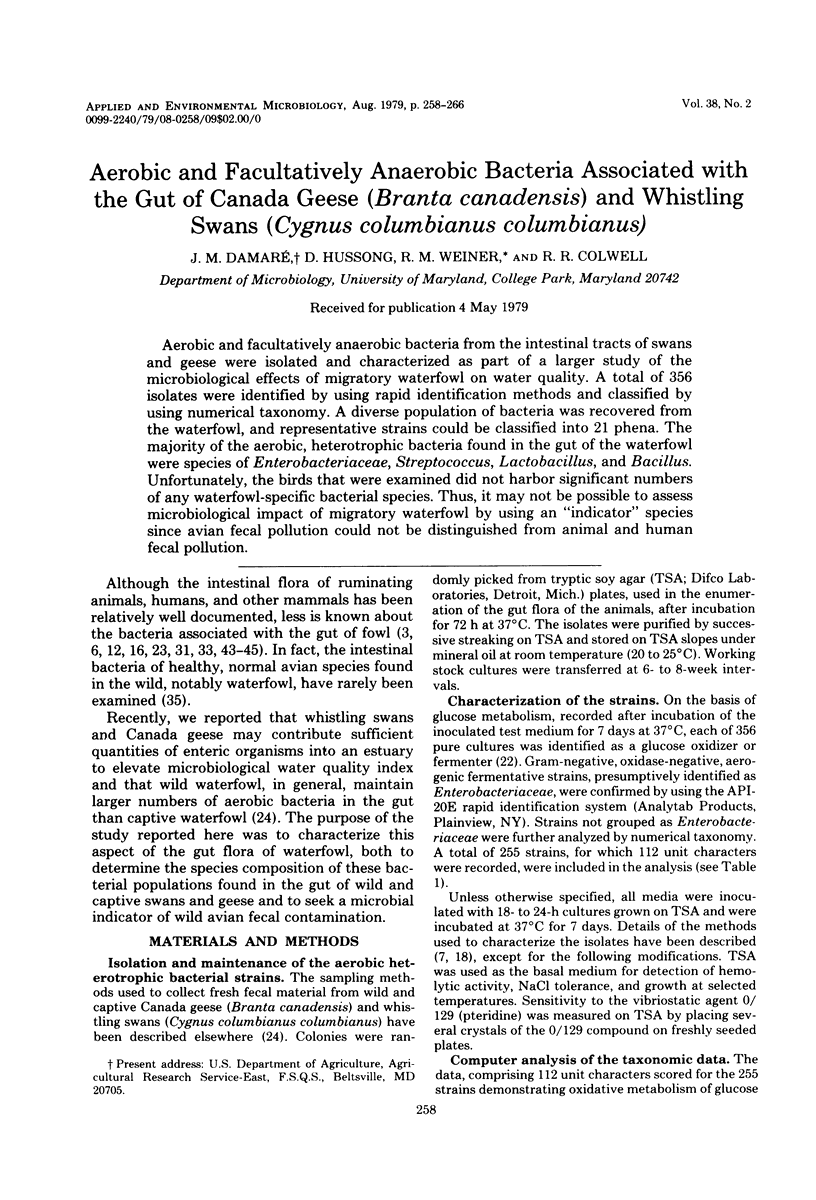
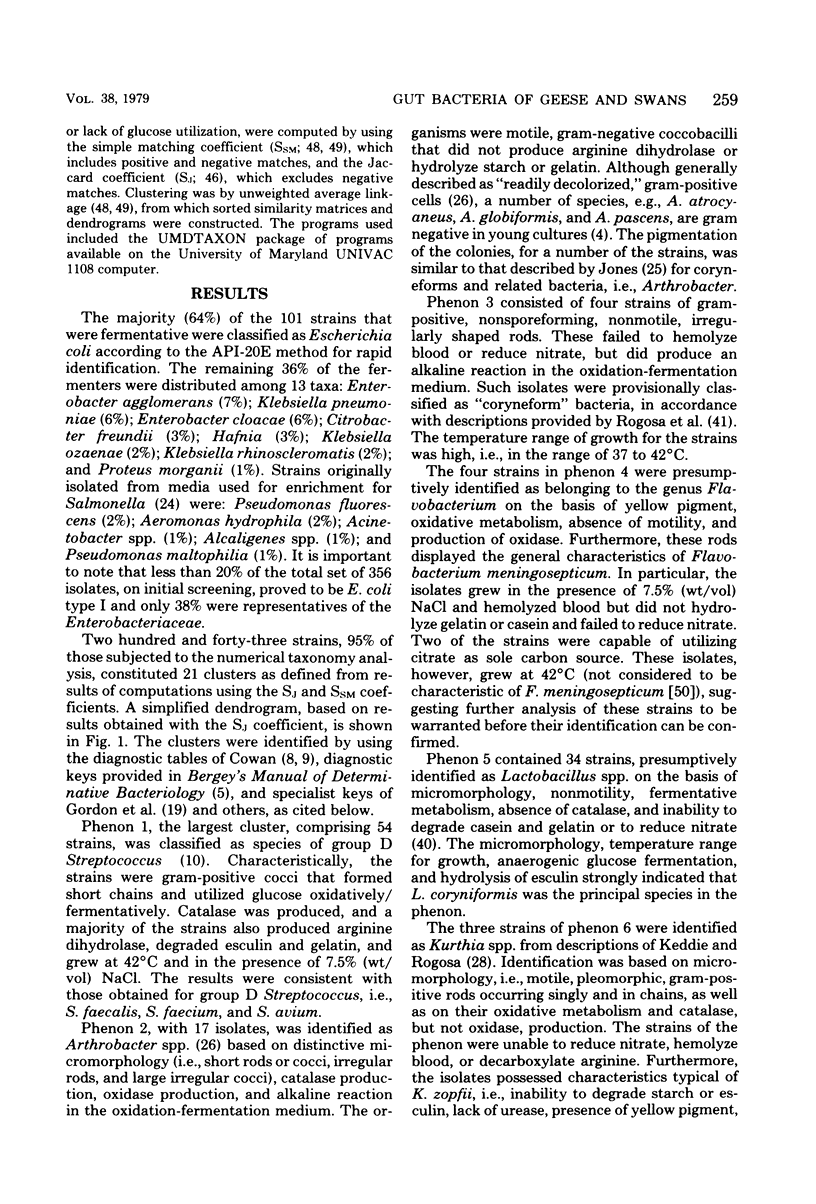
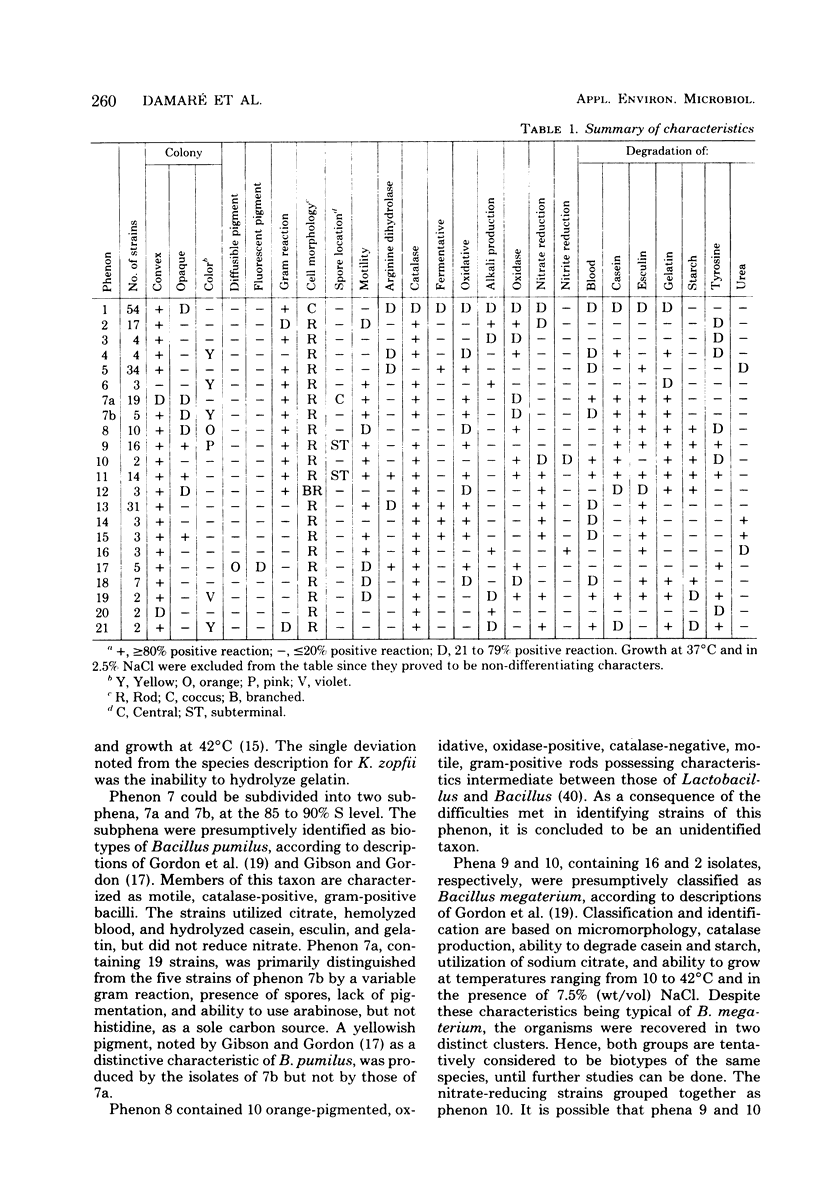
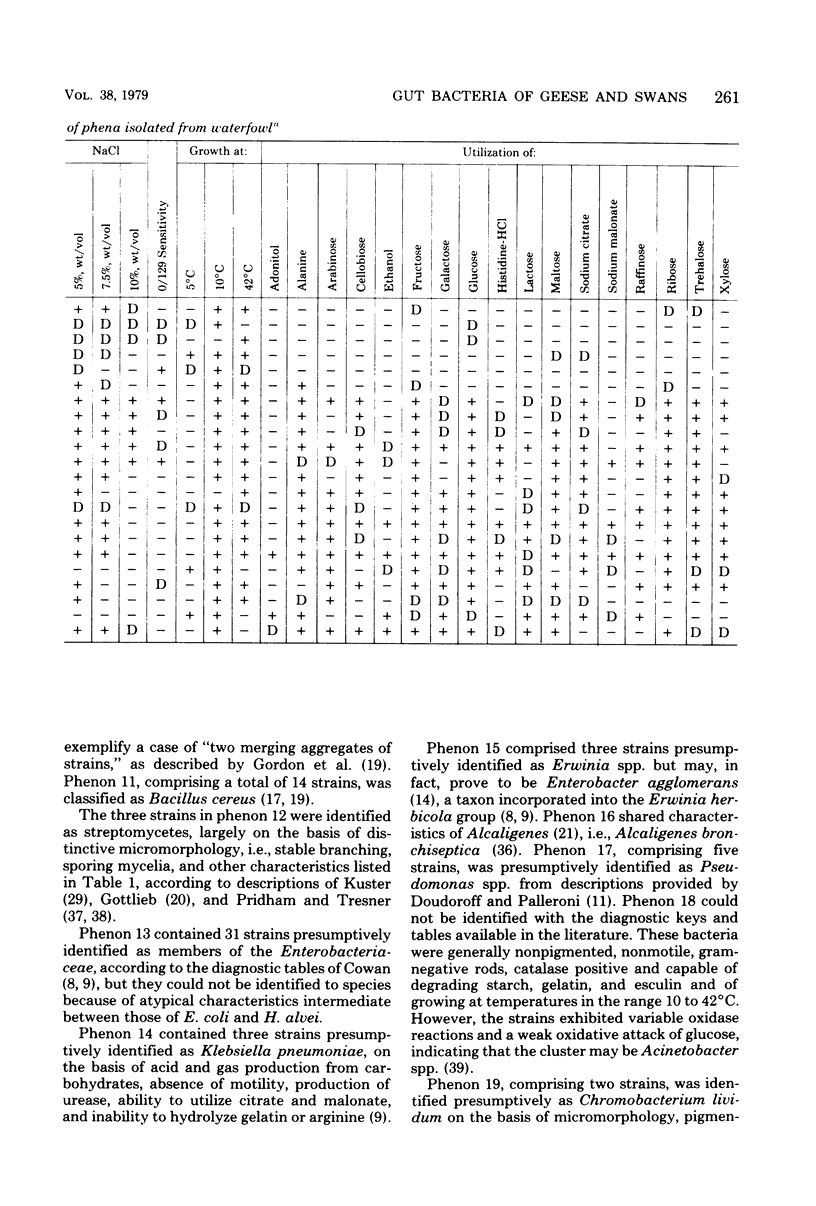
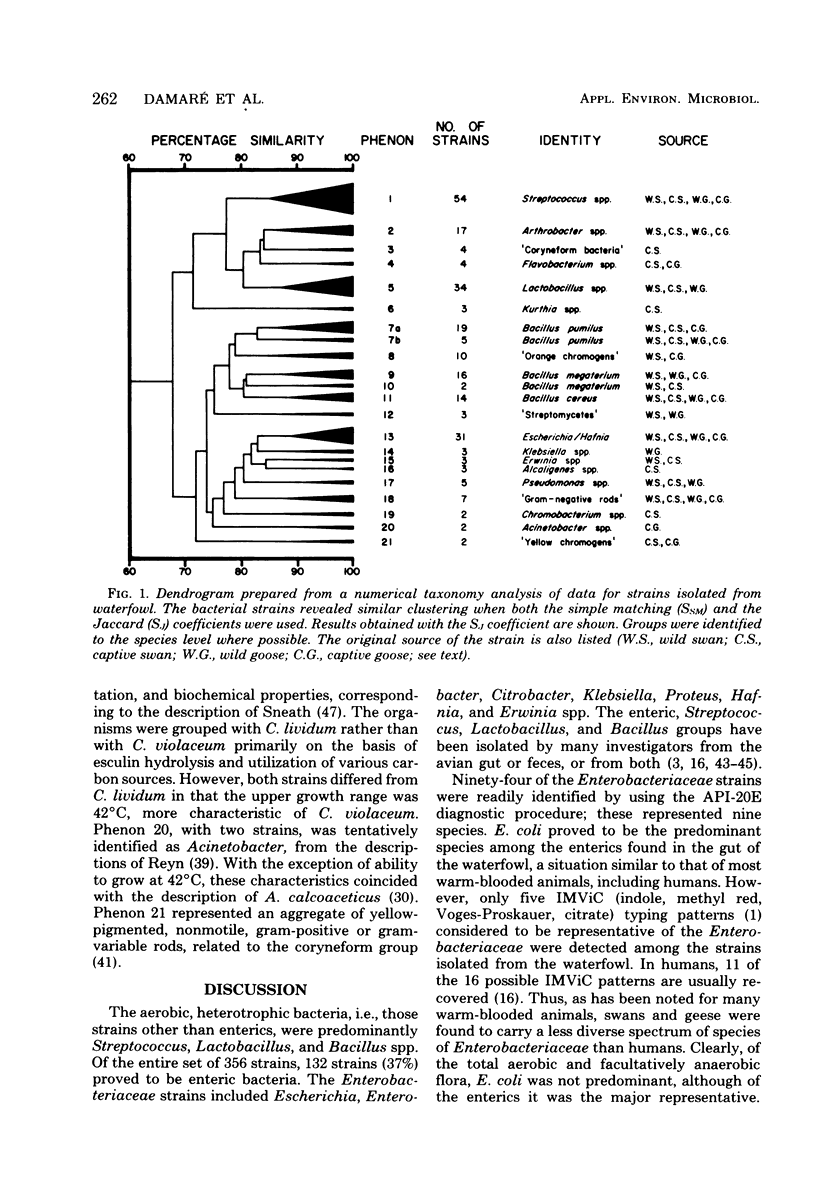
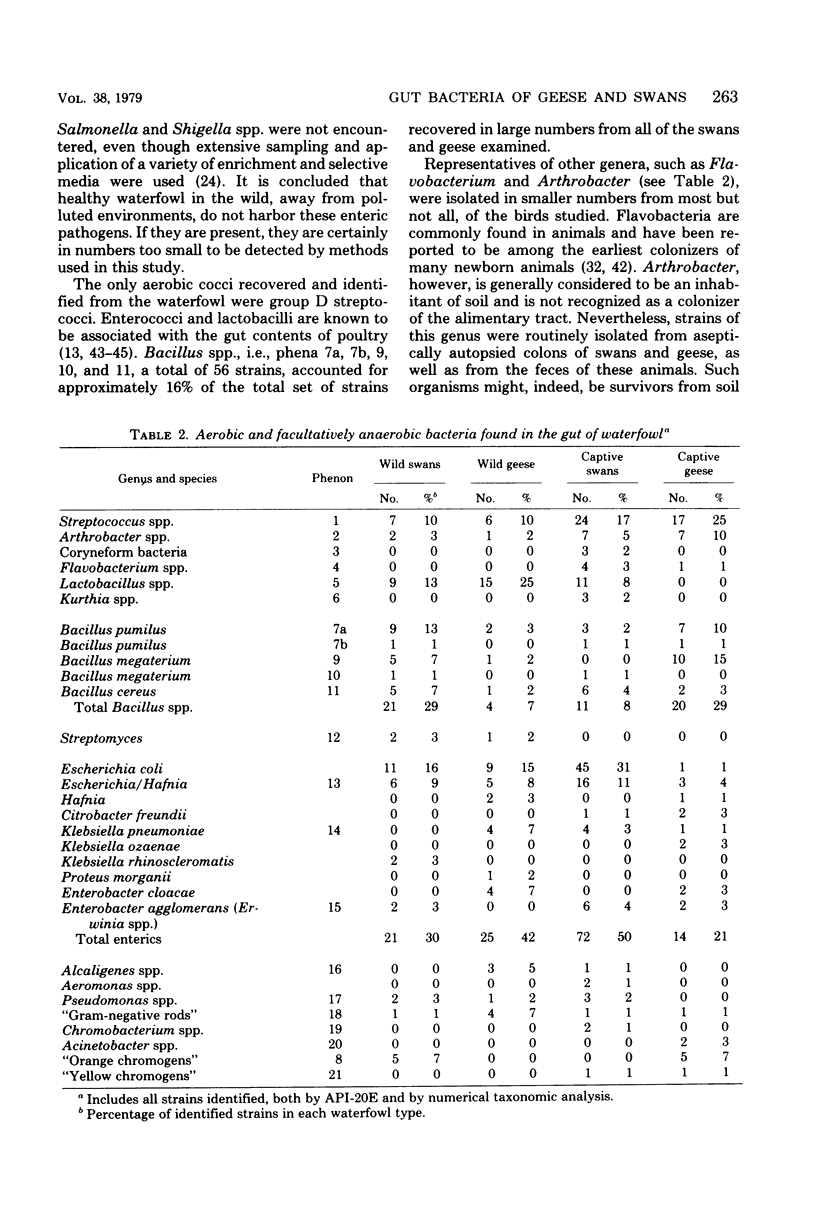

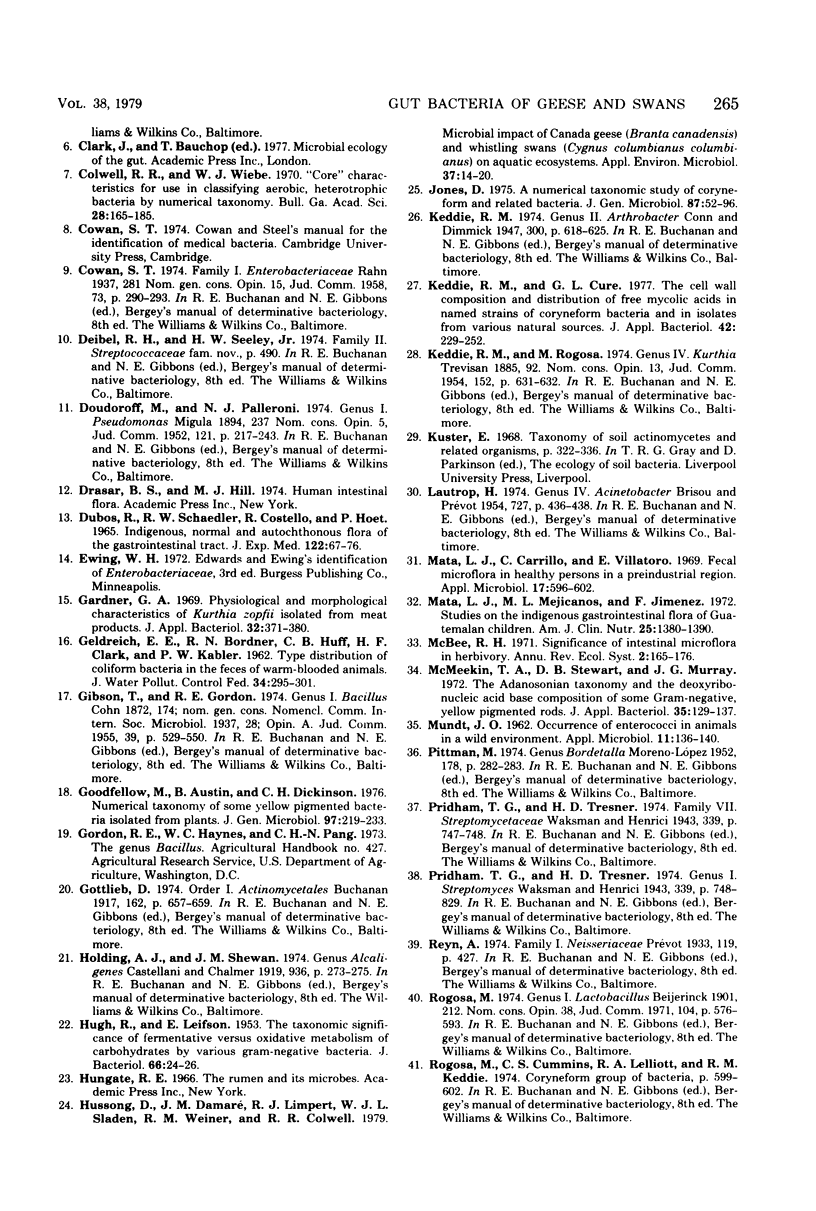
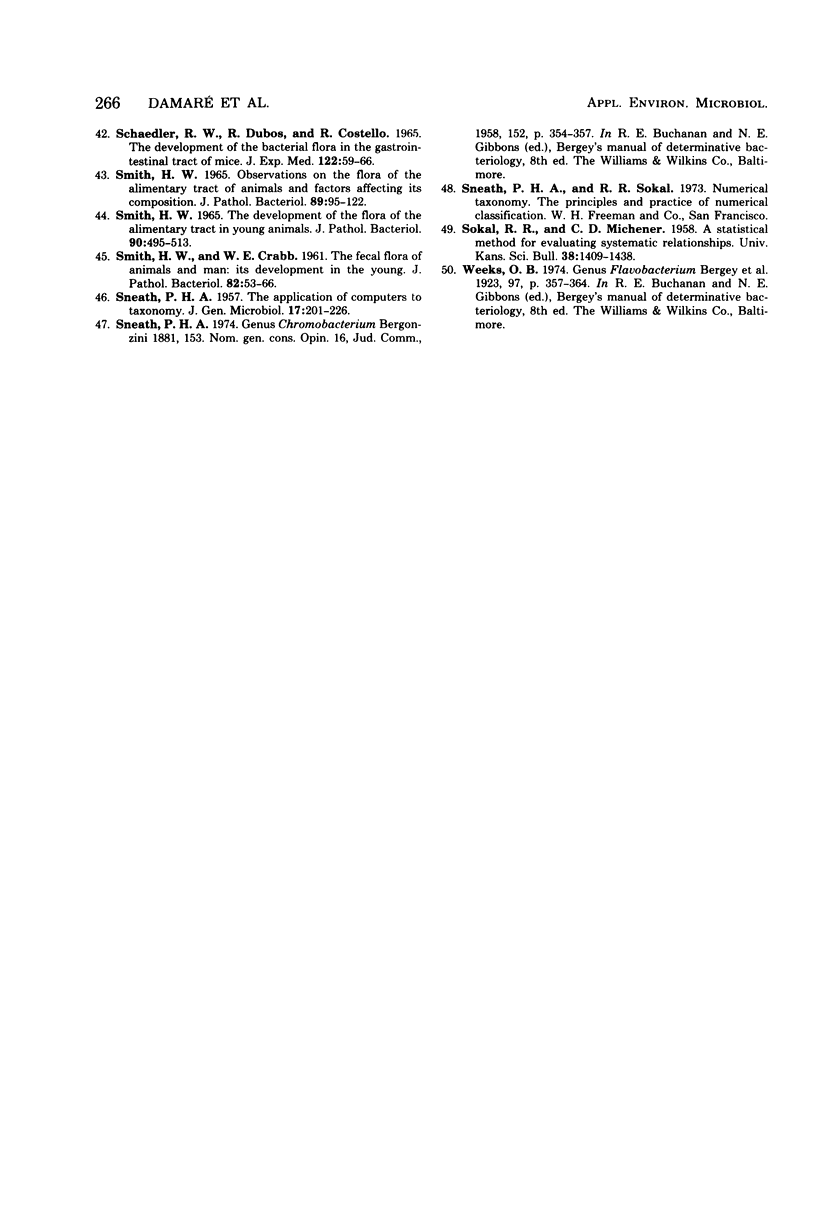
Selected References
These references are in PubMed. This may not be the complete list of references from this article.
- Austin B., Garges S., Conrad B., Harding E. E., Colwell R. R., Simidu U., Taga N. Comparative study of the aerobic, heterotrophic bacterial flora of Chesapeake Bay and Tokyo Bay. Appl Environ Microbiol. 1979 Apr;37(4):704–714. doi: 10.1128/aem.37.4.704-714.1979. [DOI] [PMC free article] [PubMed] [Google Scholar]
- Barnes E. M. The avian intestinal flora with particular reference to the possible ecological significance of the cecal anaerobic bacteria. Am J Clin Nutr. 1972 Dec;25(12):1475–1479. doi: 10.1093/ajcn/25.12.1475. [DOI] [PubMed] [Google Scholar]
- Bousfield I. J. A taxonomic study of some coryneform bacteria. J Gen Microbiol. 1972 Aug;71(3):441–455. doi: 10.1099/00221287-71-3-441. [DOI] [PubMed] [Google Scholar]
- DUBOS R., SCHAEDLER R. W., COSTELLO R., HOET P. INDIGENOUS, NORMAL, AND AUTOCHTHONOUS FLORA OF THE GASTROINTESTINAL TRACT. J Exp Med. 1965 Jul 1;122:67–76. doi: 10.1084/jem.122.1.67. [DOI] [PMC free article] [PubMed] [Google Scholar]
- Gardner G. A. Physiological and morphological characteristics of Kurthia zopfii isolated from meat products. J Appl Bacteriol. 1969 Sep;32(3):371–380. doi: 10.1111/j.1365-2672.1969.tb00986.x. [DOI] [PubMed] [Google Scholar]
- Goodfellow M., Austin B., Dickinson C. H. Numerical taxonomy of some yellow-pigmented bacteria isolated from plants. J Gen Microbiol. 1976 Dec;97(2):219–233. doi: 10.1099/00221287-97-2-219. [DOI] [PubMed] [Google Scholar]
- HUGH R., LEIFSON E. The taxonomic significance of fermentative versus oxidative metabolism of carbohydrates by various gram negative bacteria. J Bacteriol. 1953 Jul;66(1):24–26. doi: 10.1128/jb.66.1.24-26.1953. [DOI] [PMC free article] [PubMed] [Google Scholar]
- Hussong D., Damaré J. M., Limpert R. J., Sladen W. J., Weiner R. M., Colwell R. R. Microbial impact of Canada geese (Branta canadensis) and whistling swans (Cygnus columbianus columbianus) on aquatic ecosystems. Appl Environ Microbiol. 1979 Jan;37(1):14–20. doi: 10.1128/aem.37.1.14-20.1979. [DOI] [PMC free article] [PubMed] [Google Scholar]
- Jones D. A numerical taxonomic study of coryneform and related bacteria. J Gen Microbiol. 1975 Mar;87(1):52–96. doi: 10.1099/00221287-87-1-52. [DOI] [PubMed] [Google Scholar]
- Keddie R. M., Cure G. L. The cell wall composition and distribution of free mycolic acids in named strains of coryneform bacteria and in isolates from various natural sources. J Appl Bacteriol. 1977 Apr;42(2):229–252. doi: 10.1111/j.1365-2672.1977.tb00689.x. [DOI] [PubMed] [Google Scholar]
- MUNDT J. O. Occurrence of enterococci in animals in a wild environment. Appl Microbiol. 1963 Mar;11:136–140. doi: 10.1128/am.11.2.136-140.1963. [DOI] [PMC free article] [PubMed] [Google Scholar]
- Mata L. J., Carrillo C., Villatoro E. Fecal microflora in health persons in a preindustrial region. Appl Microbiol. 1969 Apr;17(4):596–602. doi: 10.1128/am.17.4.596-602.1969. [DOI] [PMC free article] [PubMed] [Google Scholar]
- Mata L. J., Mejicanos M. L., Jiménez F. Studies on the indigenous gastrointestinal flora of Guatemalan children. Am J Clin Nutr. 1972 Dec;25(12):1380–1390. doi: 10.1093/ajcn/25.12.1380. [DOI] [PubMed] [Google Scholar]
- McMeekin T. A., Stewart D. B., Murray J. G. The Adansonian taxonomy and the deoxyribonucleic acid base composition of some gram negative, yellow pigmented rods. J Appl Bacteriol. 1972 Mar;35(1):129–137. doi: 10.1111/j.1365-2672.1972.tb03682.x. [DOI] [PubMed] [Google Scholar]
- SCHAEDLER R. W., DUBOS R., COSTELLO R. THE DEVELOPMENT OF THE BACTERIAL FLORA IN THE GASTROINTESTINAL TRACT OF MICE. J Exp Med. 1965 Jul 1;122:59–66. doi: 10.1084/jem.122.1.59. [DOI] [PMC free article] [PubMed] [Google Scholar]
- SMITH H. W. OBSERVATIONS ON THE FLORA OF THE ALIMENTARY TRACT OF ANIMALS AND FACTORS AFFECTING ITS COMPOSITION. J Pathol Bacteriol. 1965 Jan;89:95–122. [PubMed] [Google Scholar]
- SNEATH P. H. The application of computers to taxonomy. J Gen Microbiol. 1957 Aug;17(1):201–226. doi: 10.1099/00221287-17-1-201. [DOI] [PubMed] [Google Scholar]
- Smith H. W. The development of the flora of the alimentary tract in young animals. J Pathol Bacteriol. 1965 Oct;90(2):495–513. [PubMed] [Google Scholar]


